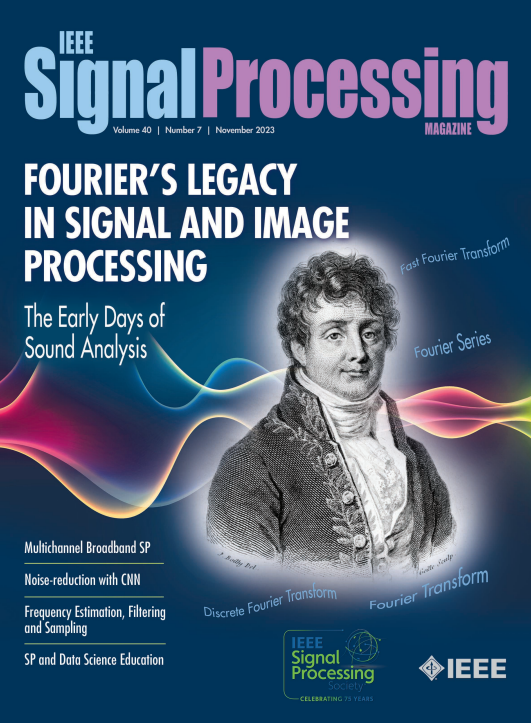Augmented Statistics of Quaternion Random Variables: A lynchpin of quaternion learning machines [Hypercomplex Signal and Image Processing]
IF 9.6
1区 工程技术
Q1 ENGINEERING, ELECTRICAL & ELECTRONIC
引用次数: 0
Abstract
Learning machines for vector sensor data are naturally developed in the quaternion domain and are underpinned by quaternion statistics. To this end, we revisit the “augmented” representation basis for discrete quaternion random variables (RVs)四元数随机变量的增强统计:四元数学习机的关键 [超复杂信号与图像处理]
针对矢量传感器数据的学习机自然是在四元数领域开发的,并以四元数统计为基础。为此,我们重新审视了离散四元数随机变量(RVs)的 "增强 "表示基础 ${\bf{q}}^{a}[n]$,即:${[}{\bf{q}}{[}{n}{]};{\bf{q}}^{\imath}{[}{n}{]};{\bf{q}}^{\jmath}{[}{n}{]}{\bf{q}}^{\kappa}{[}{n}{]]}$,并证明它在处理四元数随机变量的一般性方面的关键作用。要做到这一点,除了传统的协方差 $E\{{\bathf{q}}\mathbf{[}{n}\mathbf{]}{\bathf{q}}^{{*}}\mathbf{[}{n}\mathbf{]}\}$ [1]之外,还要对增强的四元数 RV 进行严格的考虑,并涉及额外的二阶统计量。为了阐明四元数的用处,我们考虑了四元数最著名的应用--三维定向,并对纯虚(纯)四元数的增强统计进行了说明。这里介绍的四元数统计可以在分析现有统计机器学习方法和开发新型统计机器学习方法时加以利用,从而成为四元数学习机的关键。
本文章由计算机程序翻译,如有差异,请以英文原文为准。
求助全文
约1分钟内获得全文
求助全文
来源期刊

IEEE Signal Processing Magazine
工程技术-工程:电子与电气
CiteScore
27.20
自引率
0.70%
发文量
123
审稿时长
6-12 weeks
期刊介绍:
EEE Signal Processing Magazine is a publication that focuses on signal processing research and applications. It publishes tutorial-style articles, columns, and forums that cover a wide range of topics related to signal processing. The magazine aims to provide the research, educational, and professional communities with the latest technical developments, issues, and events in the field. It serves as the main communication platform for the society, addressing important matters that concern all members.
 求助内容:
求助内容: 应助结果提醒方式:
应助结果提醒方式:


